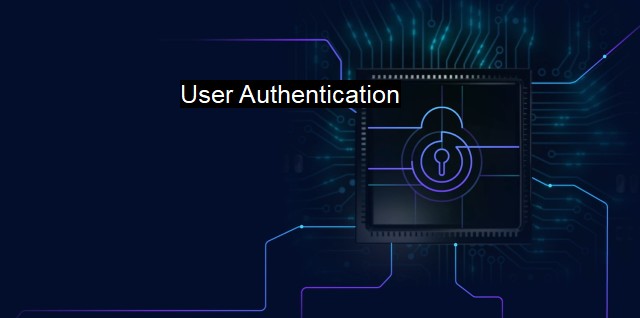What is User Authentication?
The Importance of User Authentication for Cybersecurity: Safeguarding Access to Authorized Personnel and Valuable Information
User authentication is a fundamental concept within cybersecurity and is crucial for any systems that require an element of user access control to protect against unauthorized access. This concept pertains to the verification of a user's identity to ensure that they are who they claim to be, thereby allowing them access to a certain system, website, or application. With the advent of the digital era, it has gained significant importance in the realm of network security, particularly in antivirus architecture. This level of access control enables system administrators to safeguard sensitive data and critical functionalities, thereby enhancing the overall security environment for businesses and individuals alike.User authentication operates based upon three fundamental factors, which can be understood as knowledge, ownership, and inherent. The knowledge factor refers to something the user knows, such as a password or a pin. Such knowledge-based authentication mechanisms are the most prevalent since they are relatively easy to implement and use, but they are also the most susceptible to being cracked or hacked, particularly in instances of weak or commonly used passwords.
Another factor involves something the user has, such as a physical or virtual key - also referred to as token-based authentication. Tokens can be generated in various forms such as smartcards, USB devices or they can be soft tokens, such as app-generated codes or other digitally delivered authentication keys.
The inherent factor relates to something the user is, categorized as biometric authentication. It involves using unique biological or behavioral traits, like fingerprints, facial recognition, voice recognition, or typographical patterns to identify a user.
In the context of developing sturdy cybersecurity, user authentication prevents unauthorized access, offering protection against potential threats such as data theft, identity fraud or misuse of systems and resources. As a consequence of these breaches, structural integrity, intellectual properties, financial assets, or an organization or individual's reputation could be at risk.
Antivirus software frequently employs user authentication mechanisms to ensure any changes, especially updates to the software, are made explicitly by the authorized user. User authentication is crucial in maintaining the integrity of the antivirus software itself. These tools act as gatekeepers for our connected devices, scanning and cross-referencing user behavior, and system operations against known or potential threats.
Strong user authentication strategies could deter anything from petty cybercrime instances to high profile targeted attacks from penetrating a system's defenses. Multi-factor Authentication (MFA), a user verification method using two or more independent credentials, is viewed as a robust countermeasure to thwart sophisticated cyberattacks. In sharp contrast to merely one-factor authentication, MFA offers enhanced security, making it exponentially harder for cybercriminals to gain unwarranted access.
Nonetheless, while it is on the front line of defense user authentication is not impervious to being exploitable in phishing attacks. Therefore, it must be combined with other strategies such as encryption, sandboxing, stringent user policies, and importantly, user awareness and education. with the rapid evolution of technology, biometric insecurity, quantum computing, password-less authentication measures, and behavioral biometric technologies show immense promise to revolutionize and solidify the integrity of user authentication, thus promoting a stronger cybersecurity climate.
User authentication plays a decisive role in deterring cyber threats, bridging the gap between cybercriminals and their targets. By employing a rigorous user authentication mechanism, particularly multi-factor authentication in antivirus software and cyber safety strategies, organizations and individuals enhance system defense and spare themselves undesirable repercussions, leading to a safer cyber universe.

User Authentication FAQs
What is user authentication?
User authentication refers to the process of verifying the identity of a user before granting them access to a system or service. It is an essential component of cybersecurity and antivirus to ensure that the data and resources are only accessible to authorized users.What are the different types of user authentication?
There are several types of user authentication methods, such as passwords, biometrics, tokens, smart cards, and multi-factor authentication. Each method has its own strengths and weaknesses, and the choice of method depends on the security requirements of the system or service.Why is user authentication important in cybersecurity and antivirus?
User authentication is crucial in cybersecurity and antivirus because it helps to prevent unauthorized access to sensitive data and resources. Without proper authentication, anyone can access the system, which can lead to data breaches, theft, or damage. Authentication helps to ensure that only authorized users can access the system and that their actions can be traced and audited.What are the best practices for user authentication?
Some of the best practices for user authentication include using strong passwords, implementing multi-factor authentication, keeping software and systems up to date, limiting access rights to only necessary resources, and monitoring and analyzing user activities. It is also essential to educate users about the importance of strong authentication and the risks of weak passwords and careless behavior.| | A | | | B | | | C | | | D | | | E | | | F | | | G | | | H | | | I | | | J | | | K | | | L | | | M | |
| | N | | | O | | | P | | | Q | | | R | | | S | | | T | | | U | | | V | | | W | | | X | | | Y | | | Z | |
| | 1 | | | 2 | | | 3 | | | 4 | | | 7 | | | 8 | | |||||||